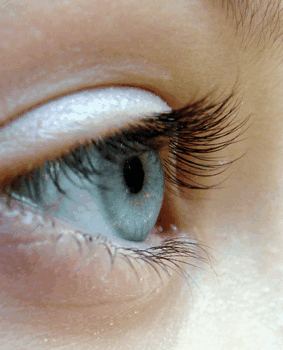Iridology was introduced to the Americans in 1950 by Dr. Bernard Jensen, a chiropractor and known proponent of a variety of alternative care methods. Dr. Jensen developed a method that uses the color of the iris as an indicator of the presence of toxins in the body. Dr. Jensen was also a holistic nutritionist and expounded in his lectures about the need to detoxify the body using natural foods.
However, it was in Europe where earlier studies on iridology (the study of iris in terms of color and markings relative to illnesses) began in the 1800s. It was during this time when a Hungarian physician and a Swedish clergyman observed the appearance of thick lines and changes in the color of iris in time with the occurrence of disease.
 The Hungarian Ignatz von Peczely injured an owl when he was a child, accidentally breaking its leg. As he nursed the injured owl back to health, he noticed the thick black stripe that appeared in its eye immediately after the broken leg started to heal. Young Ignatz never forgot the experience and when he grew up to become a physician, he observed patients with bone fractures exhibited the same black streak across the iris.
The Hungarian Ignatz von Peczely injured an owl when he was a child, accidentally breaking its leg. As he nursed the injured owl back to health, he noticed the thick black stripe that appeared in its eye immediately after the broken leg started to heal. Young Ignatz never forgot the experience and when he grew up to become a physician, he observed patients with bone fractures exhibited the same black streak across the iris.
When he was young, Nils Liljequist, a Swedish pastor, contracted malaria and was treated with quinine and iodine. Looking at himself in the mirror, he noticed that his eyes that were originally blue began to darken as the drugs accumulated in his system. As an adult, he practiced homeopathic medicine and noted similar results among his patients.
Much earlier records on the connection of iris and diseases were made by the historic Greek physician, Hippocrates. He believed the eyes are not only the window to the soul but also a window to the body where one can look through to determine the existence of different ailments. Hippocrates too was said to have observed the black marks across the iris and seen changes in the eye colors of his patients.
Although iridology is used primarily as a diagnostic tool, it is limited to indicating the condition of the different organs of the body. Iridology cannot be used to identify a specific disease because many diseases create similar changes in body tissues.
The practice of iridology is more of a preventative measure to help the patient understand more about his basic health issues. This then makes it easier to refer them to the appropriate specialists for the necessary treatments or medical intervention.
The operating principle of iridology is that an early detection of any potential disease can initiate the necessary treatment to prevent it from spreading. The iris is examined for markings and any color changes. A session with an iridologist takes about 60 minutes and is painless. The iris is photographed and the pictures are then enlarged to show the complexity of the iris structure with its numerous fibers and colors. The iridologist studies this picture using a magnifying glass to identify any potential ailments.
It is believed that most of ailments are hereditary. With an extensive review of the family medical history and careful examination of the photos of the iris, an iridologist can determine a patient’s susceptibility to toxicity and predisposition to illnesses.
The principle behind iridology is a holistic concept that is also maintained by the other branches of alternative medicine. It has been established that all body parts are interrelated and changes are manifested when the body has to deal with an impending degenerative disease.
According to this theory, the color of the iris changes at the inception of a degenerative disease. The body then uses this change as an indicator of a looming health problem and as a warning which should be heeded by the person to seek preventive measures. The concept is very much similar to that espoused by chiropractors who perform spinal adjustments to help internal organs. You can also observe medical doctors checking the eyes for any sign of sickness. The size of blood vessels in the eyes indicates the cholesterol level of a person.
Unfortunately, majority of medical doctors do not favor iridology and the critics of the practice are not limited to mainstream medicine. This criticism stems from the fact that iridologists are often not trained in conventional or naturopathic medical schools.
Iridology can only be studied at private institutions, usually training or seminars that last for two to three days at most, and sponsored by marketing companies that guarantee their distributors a “certification” as an iridologist. The risk lies on the zealous practitioner who may exaggerate any findings in order to sell more of their products.
Nonetheless, iridology is an excellent tool to assess natural health but its reputation is gravely hurt by many of its practitioners’ emphasis on consumption and sales generation. To be assured of a more professional iridologist, look from among those who have been certified by the International Iridology Research Association or the Institute for Applied Iridology.
If you found this article interesting, then you may want to check out Energy Medicine.

